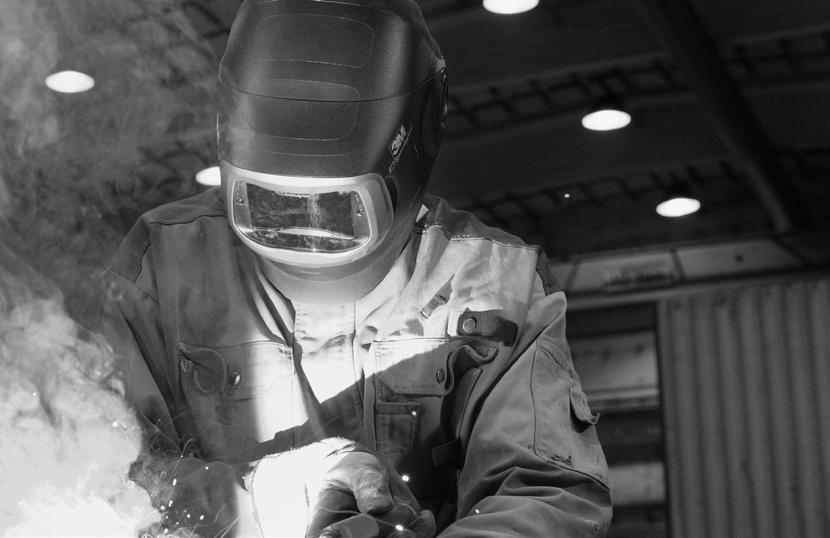
1 minute read
Exposure Standards are just the beginning
The exposure standards in Australia and New Zealand ‘do not identify a dividing line between a healthy or unhealthy working environment’5
Take for example, a welder operating within the Workplace Exposure Standard (WES) for ‘welding fume not otherwise classified’ (5 mg/m3, TWA). Even if the welder is operating within the WES, an unprotected welder could inhale up to 11 grams of a carcinogenic substance (welding fume) every year*.
Advertisement
Aside from the WES for ‘welding fume not otherwise classified’, workplaces must also ensure no other Workplace Exposure Standards are exceeded.
Below we list the most common chemicals workers may be exposed to when welding, the source of these chemicals in the welding fume, respective health effects, and the current WES released by Safe Work Australia4,6.
Aluminium Aluminium component of some alloys, e.g., nickel chromium, copper, steel, magnesium, brass and filler materials.
Beryllium Hardening agent found in copper, magnesium, aluminium alloys and electrical contacts.
Cadmium Stainless steel containing cadmium or plated materials, zinc alloy.
Chromium
Most stainless steel and high-alloy materials, welding rods. Also used as plating material.
"Metal Fume Fever." A carcinogen. Other chronic effects include damage to the respiratory tract.
Irritation of respiratory system, sore and dry throat, chest pain and breathing difficulty. Chronic effects include kidney damage and emphysema. Suspected carcinogen.
Increased risk of lung cancer. Some individuals may develop skin irritation. Some forms are carcinogens (hexavalent chromium).
0.5 or 0.05
(Depending on chemical form)
Copper
Iron Oxides
Alloys such as nickel-copper, brass, bronze. Also some welding rods.
The major contaminant in all iron or steel welding processes.
Acute effects include irritation of the eyes, nose and throat, nausea and "Metal Fume Fever".
Siderosis - a benign form of lung disease cause by particles deposited in the lungs. Acute symptoms include irritation of the nose and lungs. Tends to clear up when exposure stops.
0.2
5
Lead
Solder, brass and bronze alloys, primer/coating on steels.
Chronic effects to nervous system, kidneys, digestive system and mental capacity. Can cause lead poisoning. Ototoxic and therefore risk of hearing loss.
0.05
Manganese
Most welding processes, especially high tensile steels.
"Metal Fume Fever." Chronic effects may include central nervous system problems. Ototoxic and therefore risk of hearing loss.
Zinc Oxides
Galvanized and painted metal. Metal Fume Fever. 5






